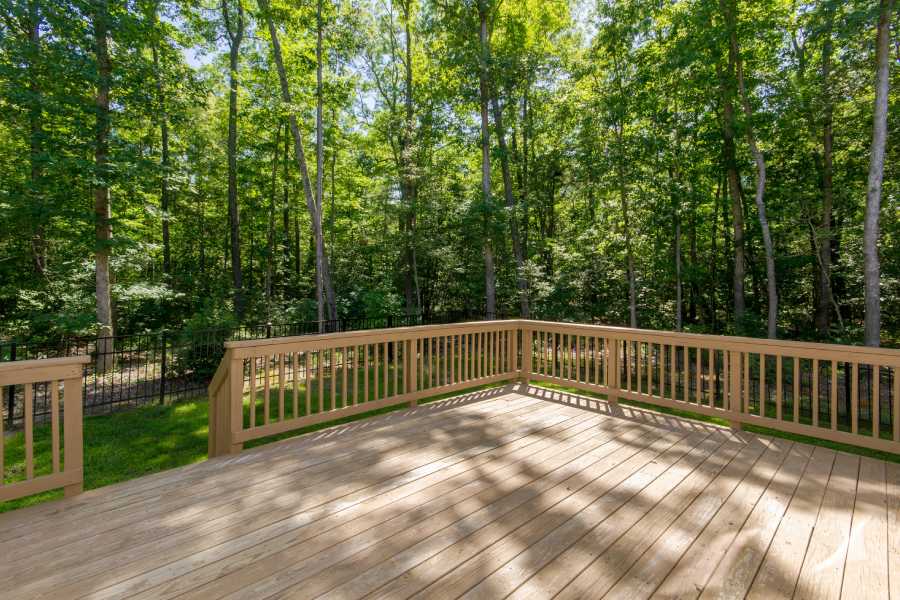Have you ever admired a neighbor’s beautiful outdoor space and wondered about its construction? A deck is more than just a platform attached to a house – it’s a complex structure with many essential components. So, what are the parts of a deck?
Understanding the parts of a deck is crucial whether you’re planning to build your own deck or simply want to maintain an existing one. In this article, we’ll break down the anatomy of a deck, exploring each element that contributes to its strength, safety, and functionality.
From the foundation that supports the entire structure to the decorative elements that give it character, we’ll cover it all. You’ll learn about the load-bearing components, the surface you walk on, and the features that make a deck both safe and visually appealing.
By the end of this guide, you’ll have a comprehensive understanding of deck construction, empowering you to make better decisions about your outdoor living space.
What Are the Parts of a Deck?
Foundation and Footings
The foundation of a deck is its most critical component. It is the framework underneath your deck that provides stability and support for the entire structure. The entire construction of the deck, along with the cost of it, will greatly depend on the foundation. The only thing concerning regarding the substructure is the material from which it is made. The foundation is usually constructed from traditional wood, which is susceptible to moisture damage and weathering.
Footings are the underground concrete blocks that distribute the deck’s weight to the ground. Proper footings prevent settling and shifting over time. They’re typically made of poured concrete. The size and depth of footings depend on local building codes and soil conditions. In colder climates, footings must extend below the frost line to prevent heaving.
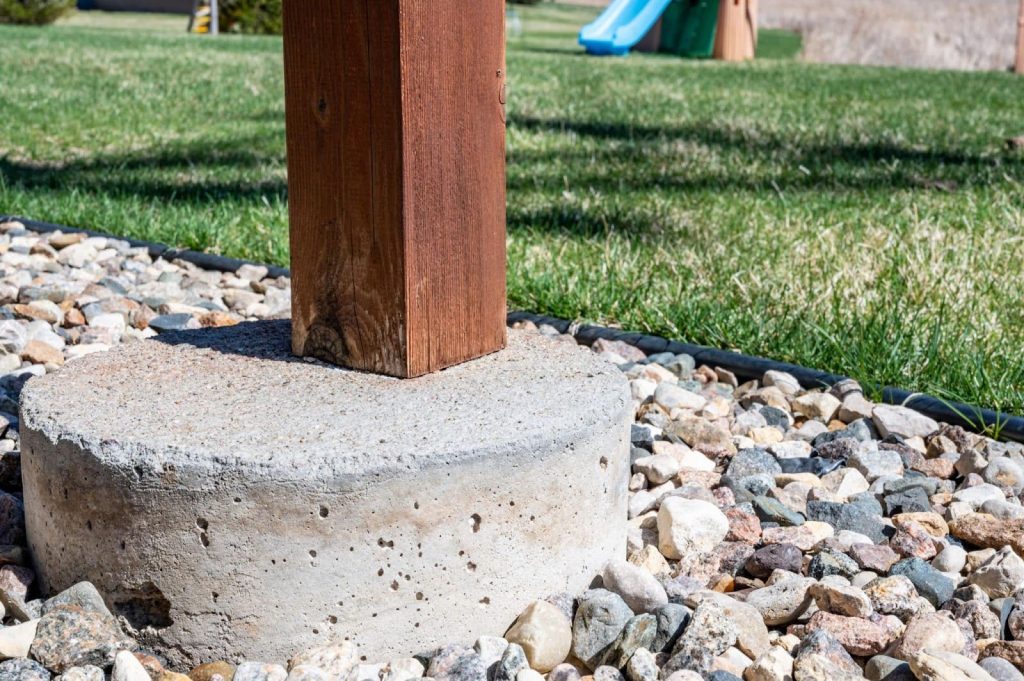
Posts
Deck posts are vertical supports that transfer the deck’s weight to the footings. They’re usually made of pressure-treated lumber, though metal posts are becoming more common. Posts are crucial for elevated decks and multi-level designs.
Proper installation of posts is vital for deck stability. They should be securely anchored to the footings. Post caps protect the top of the posts from water damage. Some designers use decorative post sleeves to enhance the deck’s appearance.

Beams
Beams are horizontal structural members that span between posts. They support the joists and distribute the deck’s weight evenly. Beams are typically made of large dimensional lumber or engineered wood products.
The size and spacing of beams depend on the deck’s dimensions and expected load. Proper beam installation is crucial for deck safety. Beams are often bolted directly to the posts or supported by post caps.
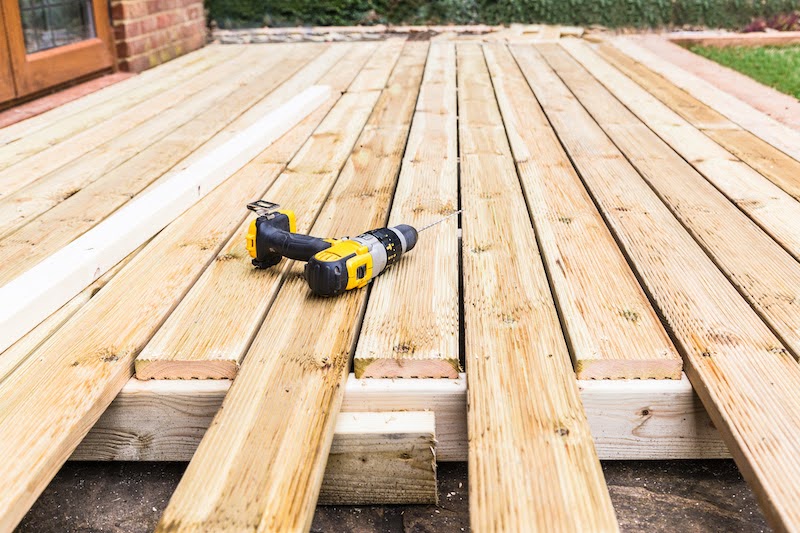
Joists
Joists are horizontal framing members that support the decking boards. They run perpendicular to the house and are typically spaced 16 inches apart. Joist size depends on the span and expected load of the deck.
Joist hangers securely attach joists to the ledger board and beam. Proper joist spacing ensures a sturdy deck surface. Blocking between joists adds strength and prevents twisting. Some builders use joist tape to protect the top of the joists from moisture.

Decking
Decking boards from the walking surface of the deck. They come in various materials, including pressure-treated lumber, cedar, composite, and PVC. Each material has its own pros and cons regarding cost, maintenance, and longevity.
Installation patterns can range from simple parallel layouts to complex herringbone designs. Proper spacing between boards allows for drainage and expansion. Many builders use hidden fastener systems for a cleaner look.
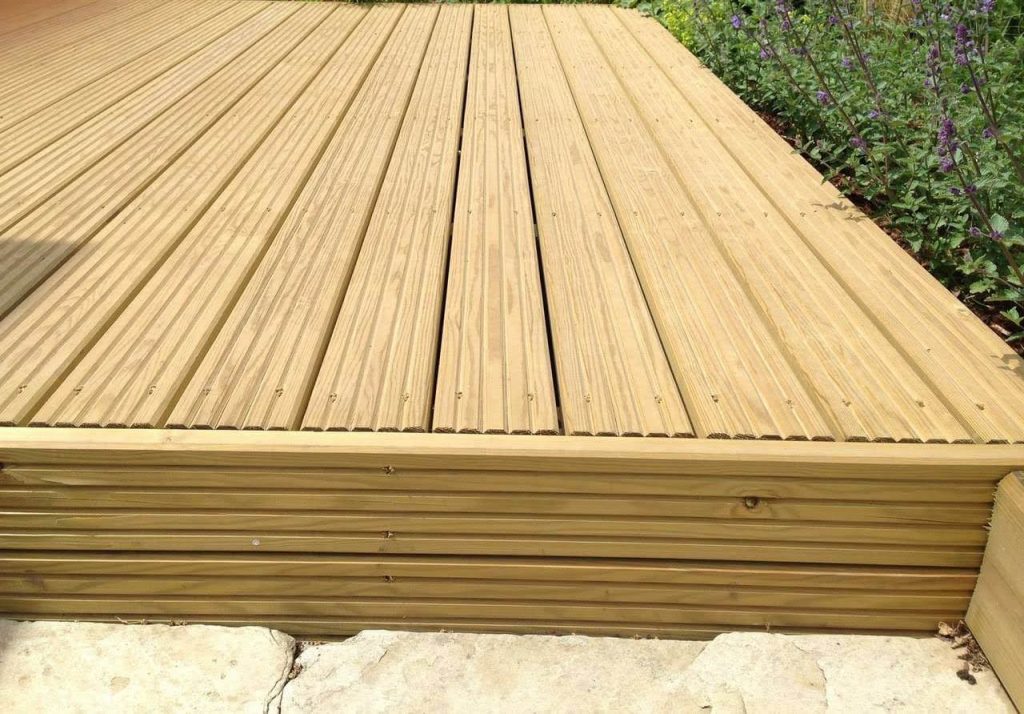
Railings and Balusters
Railings are essential for deck safety, especially on elevated decks. They also contribute significantly to the deck’s overall appearance. Common railing materials include wood, metal, glass, and composite.
Balusters are the vertical components of the railing system. They must be spaced close enough to meet safety codes, typically less than 4 inches apart. Many homeowners choose decorative balusters to enhance their deck’s style.

Stairs
Deck stairs consist of treads (horizontal steps), risers (vertical pieces between treads), and stringers (diagonal supports). Building codes dictate specific requirements for tread depth, riser height, and overall angle.
Proper stair design is crucial for safety and comfort. Many builders use pre-cut stringers for consistency. Handrails are typically required for stairs with more than three risers.
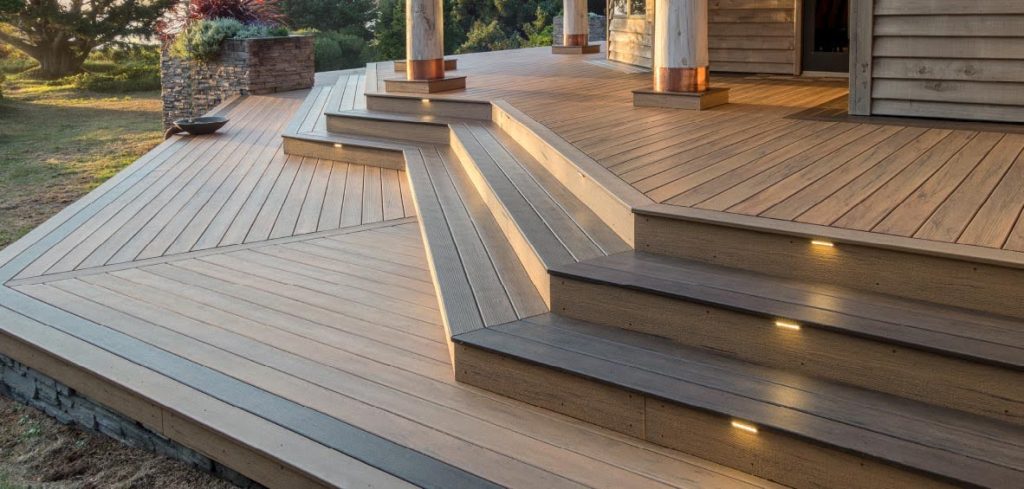
Ledger Board
The ledger board attaches the deck to the house, providing crucial support. It’s typically a pressure-treated board bolted directly to the house’s rim joist. Proper installation of the ledger board is critical to prevent water damage and deck collapse.
Flashing must be installed above and behind the ledger board to direct water away from the house. Some builders use standoff ledgers to create an air gap between the deck and house for better drainage.
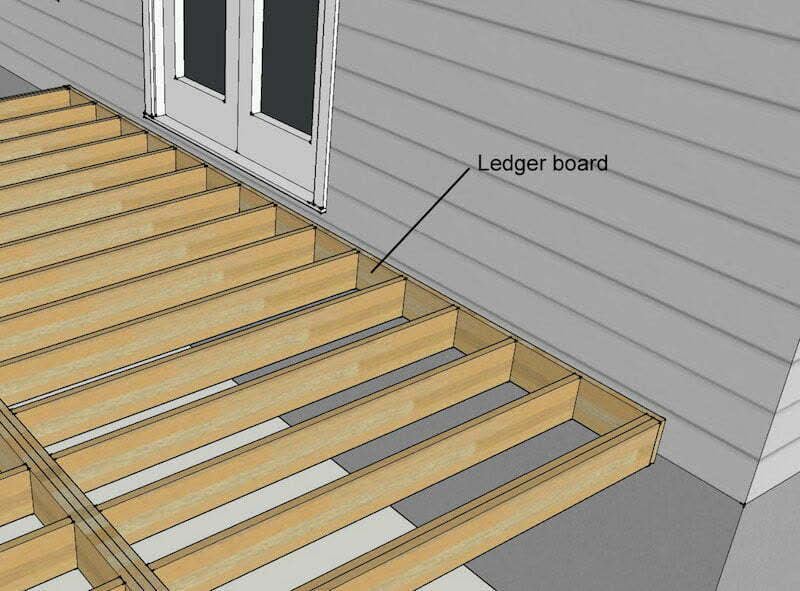
Flashing
Flashing is a thin, waterproof material used to prevent water infiltration at joints and connections. It’s particularly important around the ledger board and where the deck meets the house.
Common flashing materials include aluminum, copper, and flexible rubberized membranes. Proper installation of flashing is crucial for protecting both the deck and the house from water damage. Step flashing is often used for multi-level decks.
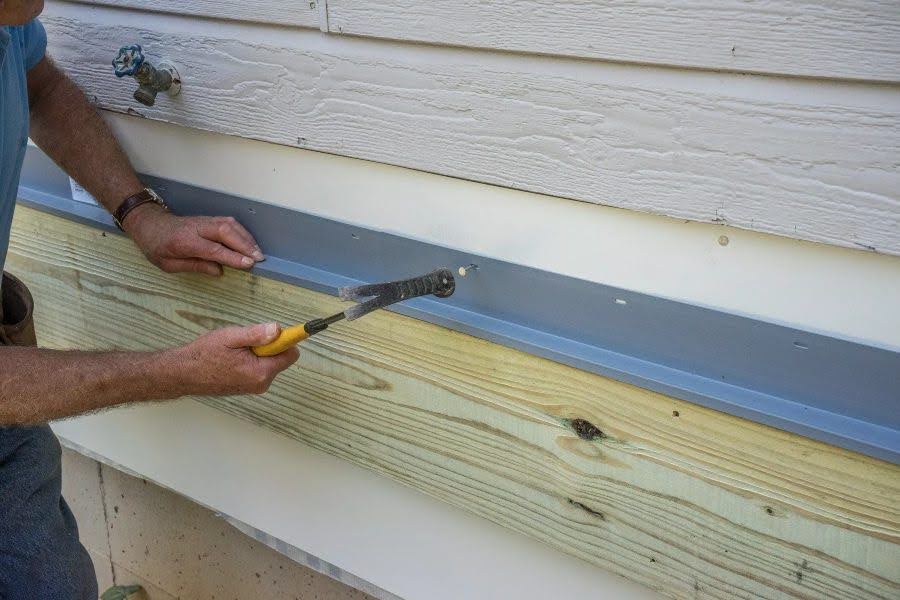
Skirting and Lattice
Skirting covers the space between the ground and the bottom of the deck. It provides a finished look and can hide unsightly framing. Skirting materials often match or complement the decking.
Lattice is a popular skirting option that allows for ventilation while still providing coverage. It can be made of wood, vinyl, or composite materials. Some homeowners use decorative panels or even living walls as alternative skirting options.
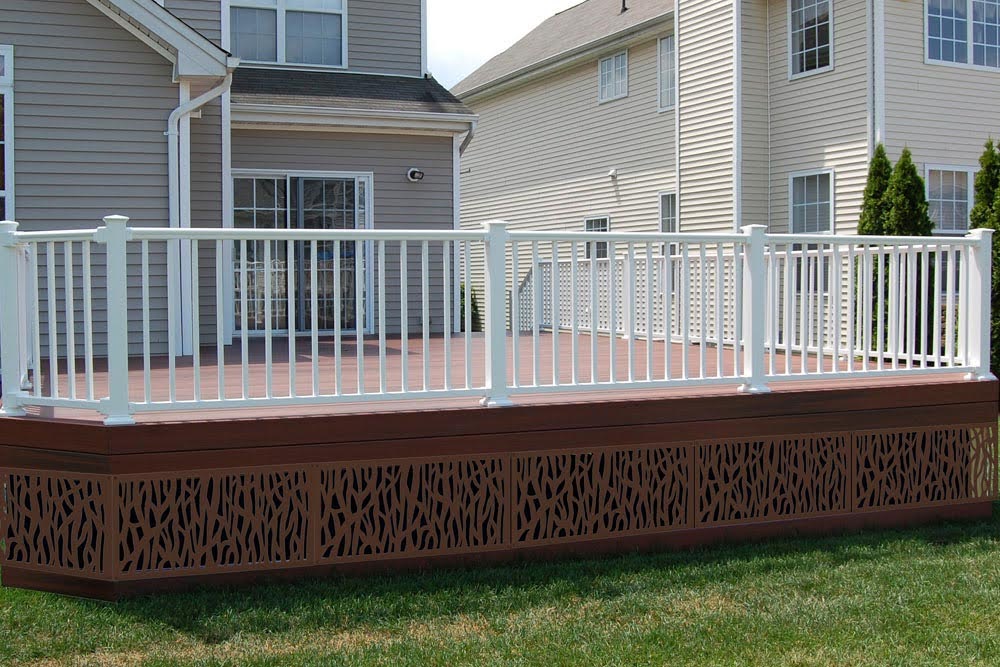
Conclusion
As we’ve explored the various components of a deck, we hope you’ve gained a deeper appreciation for the complexity and ingenuity behind these outdoor structures. From the crucial foundation and footings to the visible decking and railings, each element plays a vital role in creating a safe, durable, and enjoyable outdoor space.
Remember, a well-built deck is more than the sum of its parts – it’s a seamless blend of engineering and design that enhances your home and lifestyle.
We hope this article has equipped you with the insights needed to approach your deck projects with confidence and expertise. Now that you know what are the parts of a deck called and their specific roles, it’s time to take on this project and make your deck a place where everyone can enjoy.

